
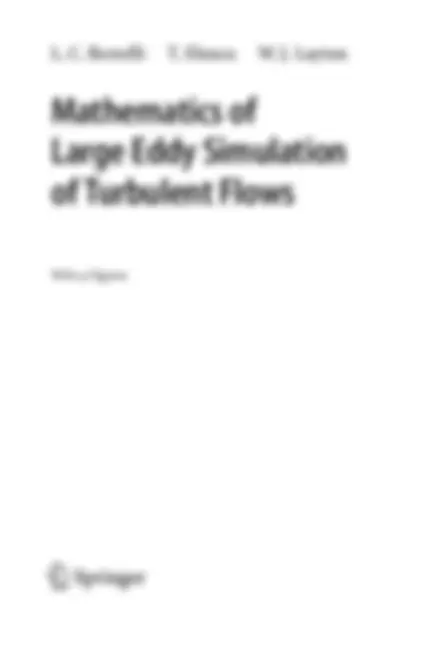











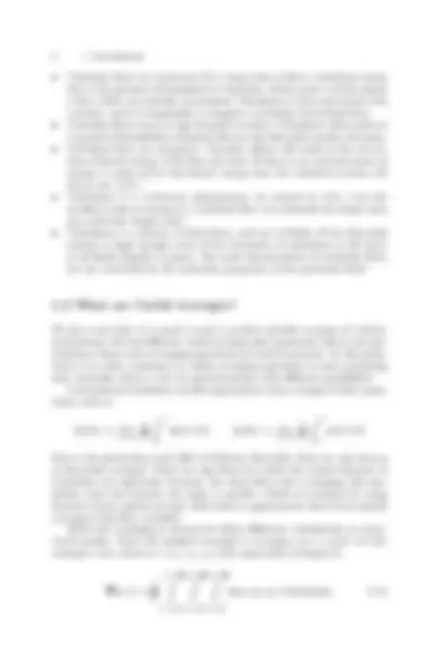

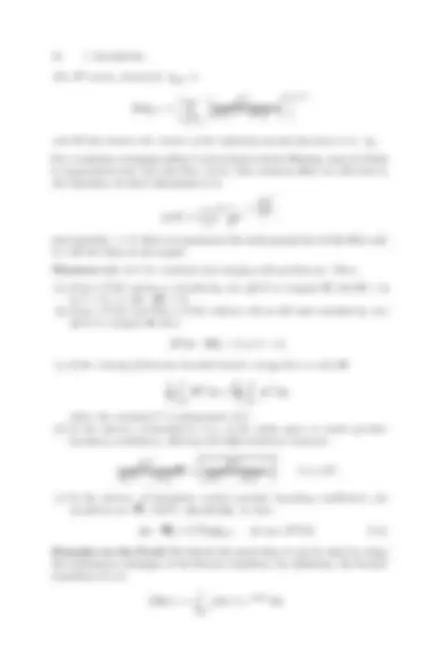
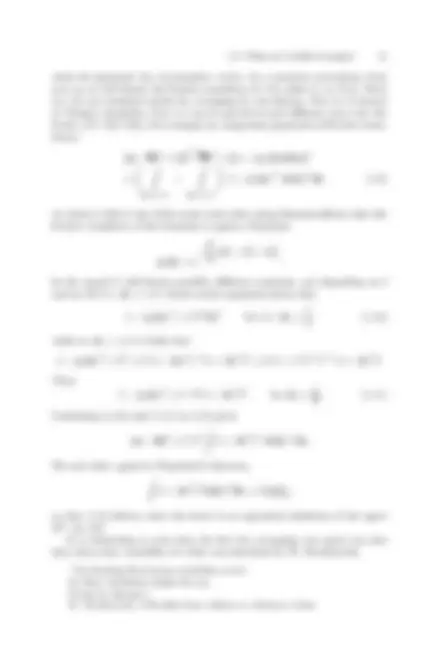
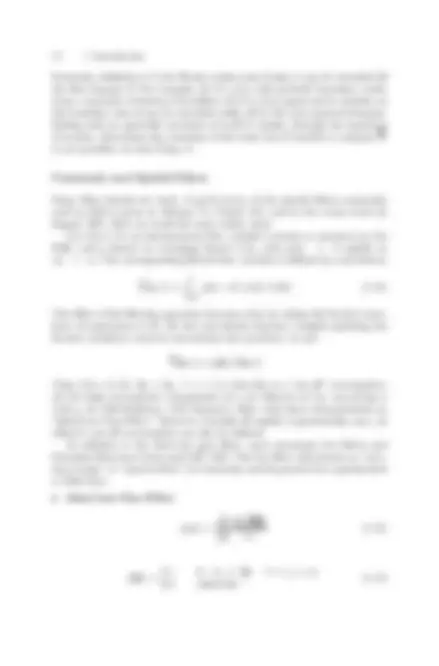
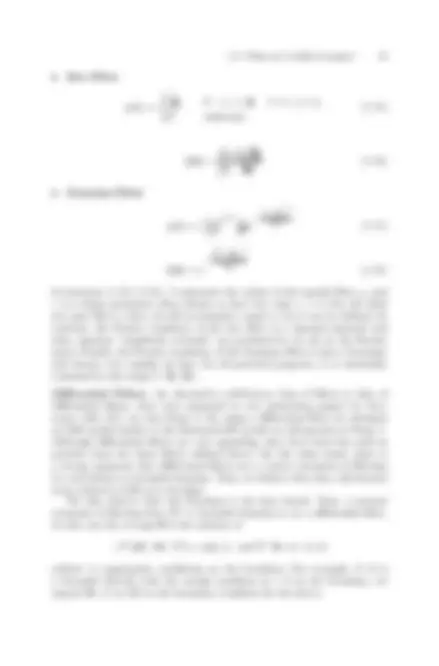

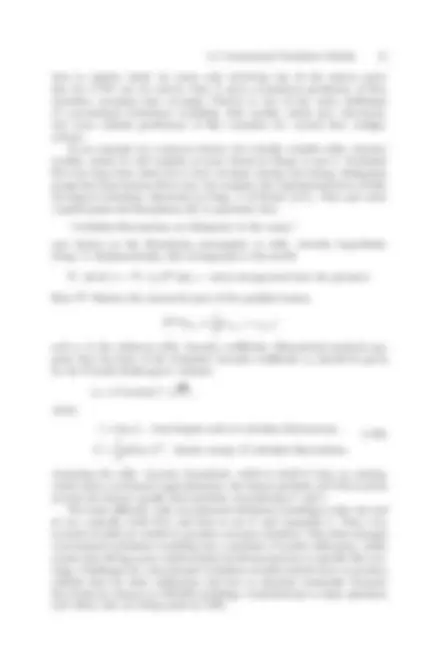
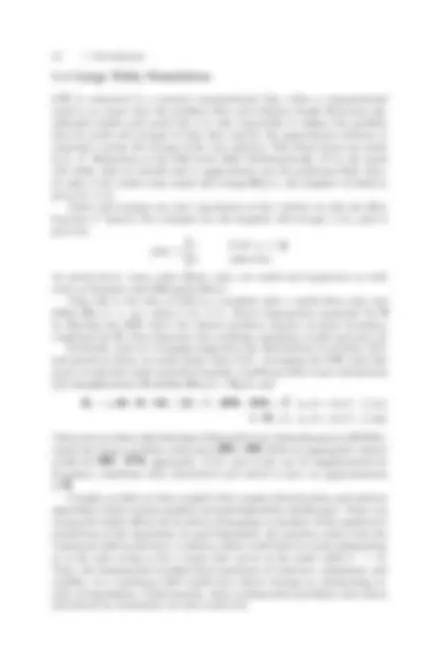
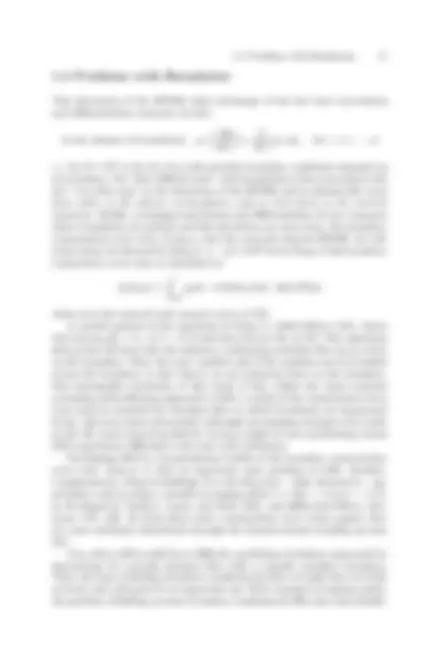



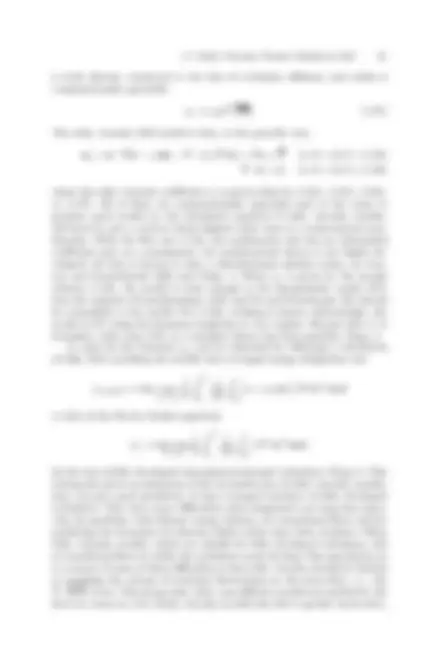

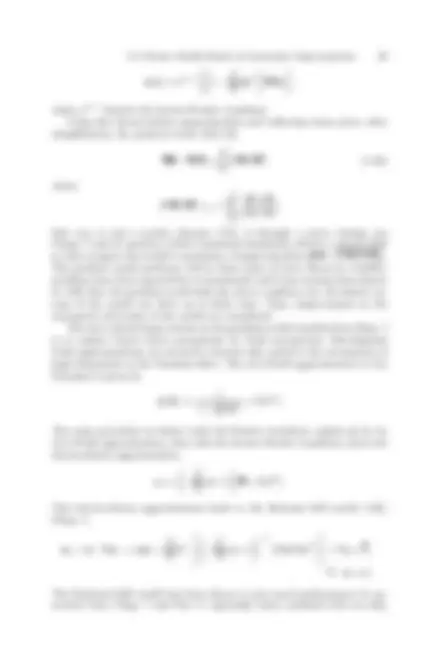
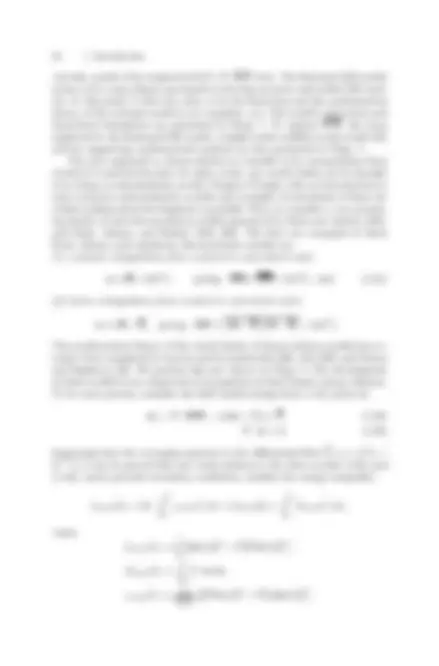






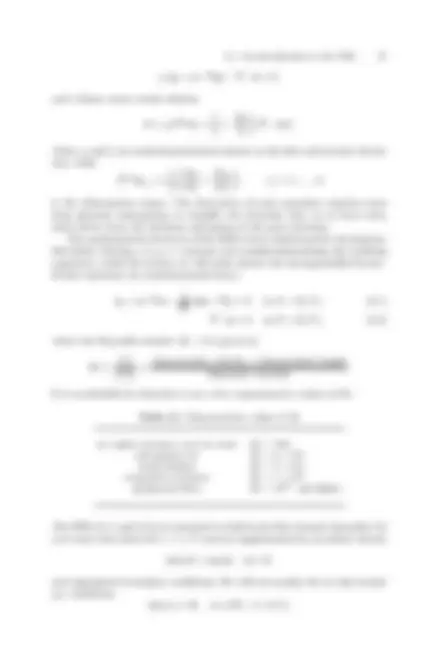
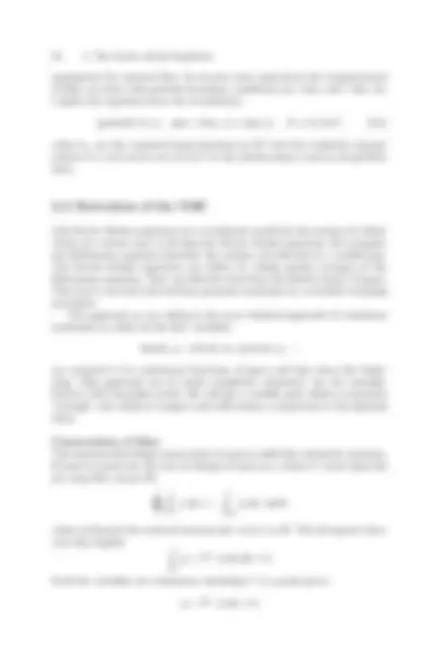
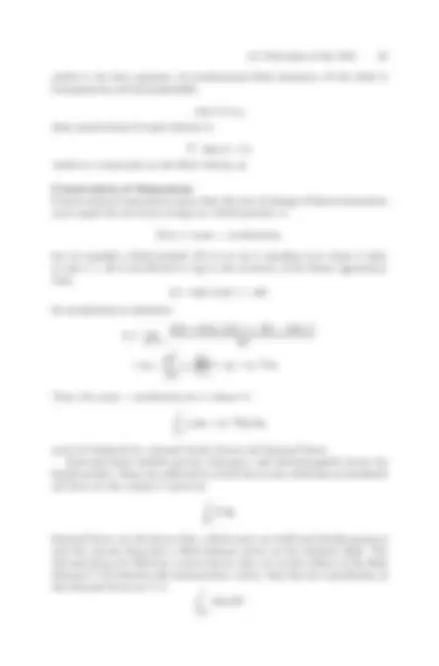
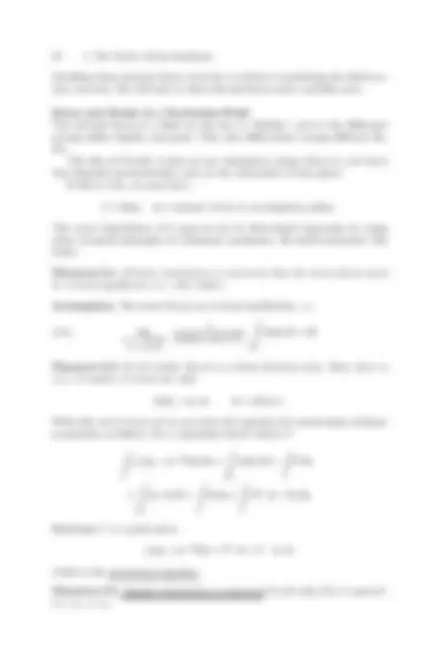
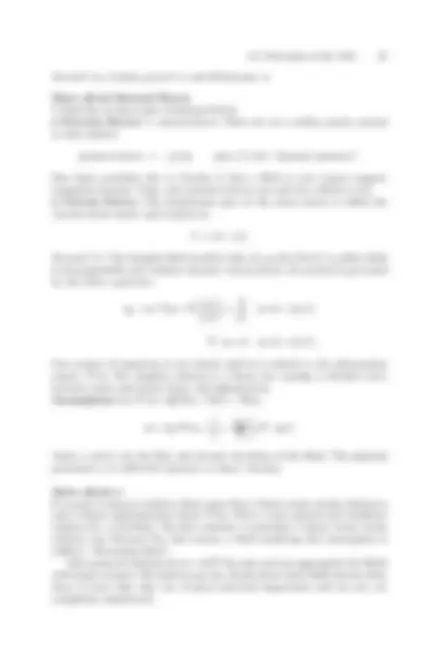
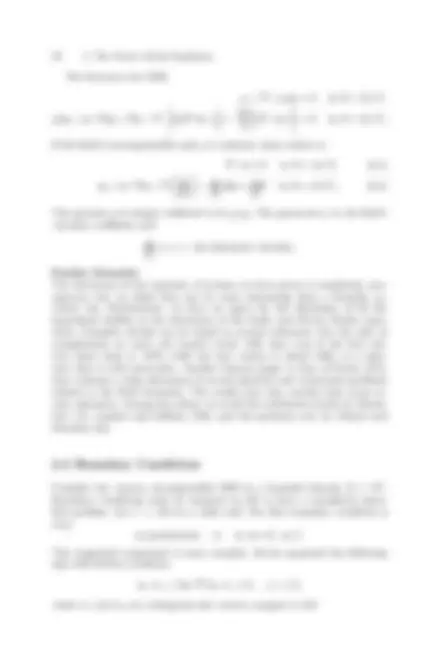


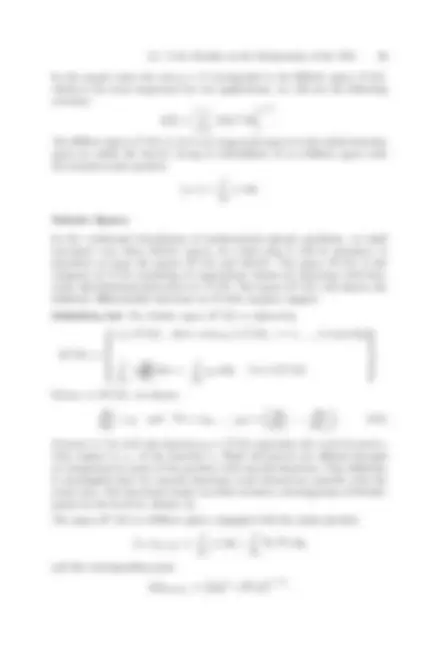

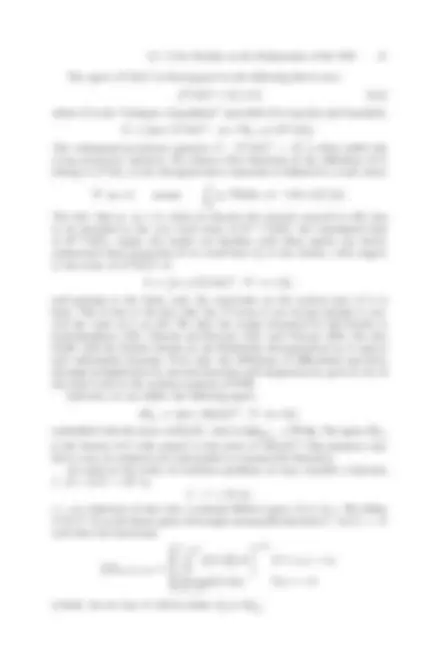
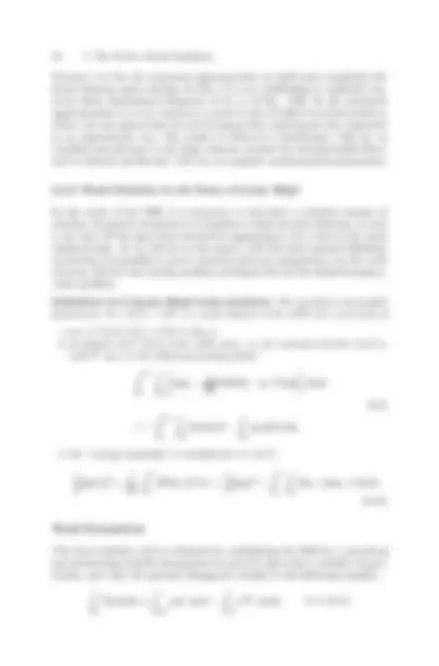

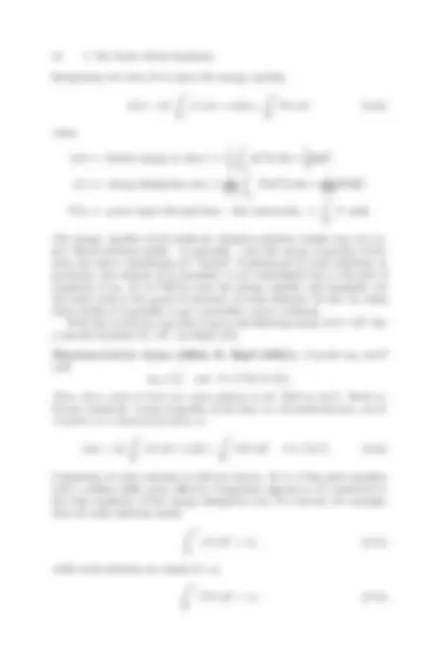
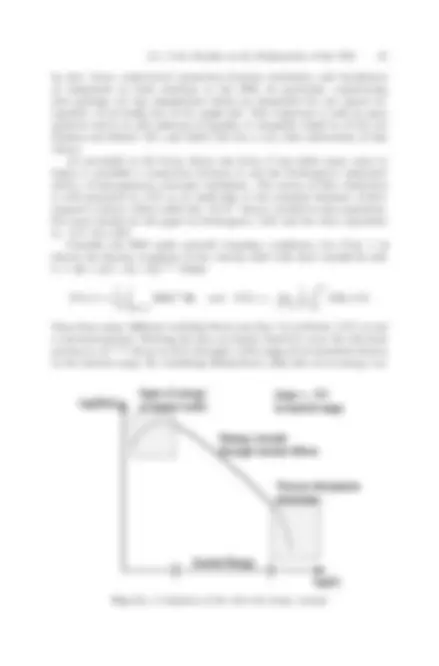

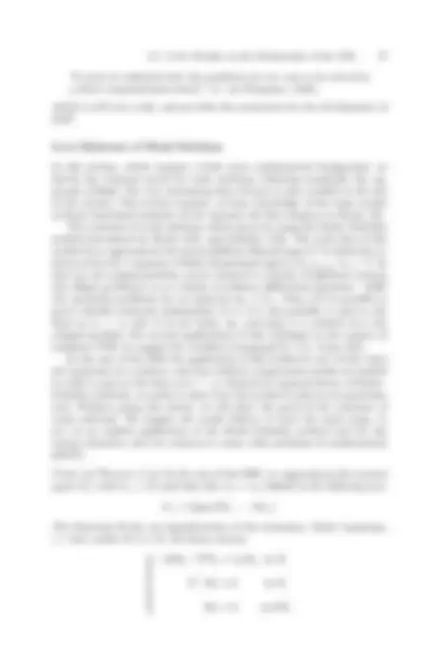
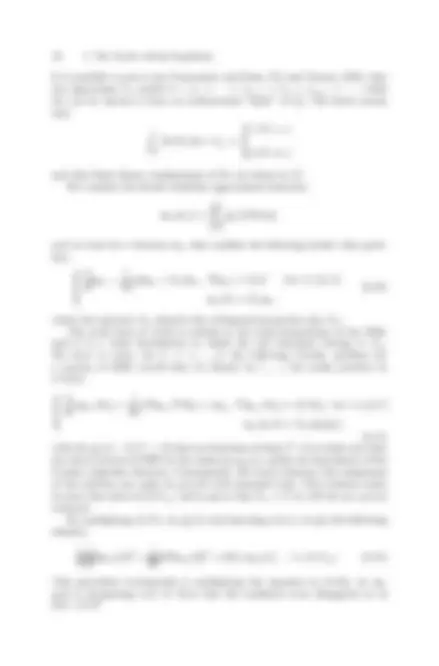

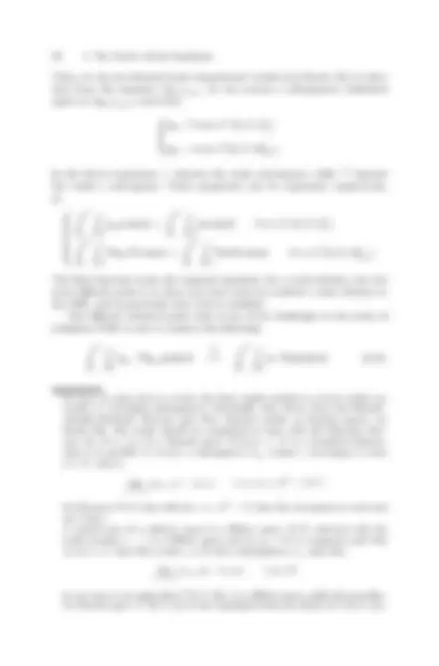
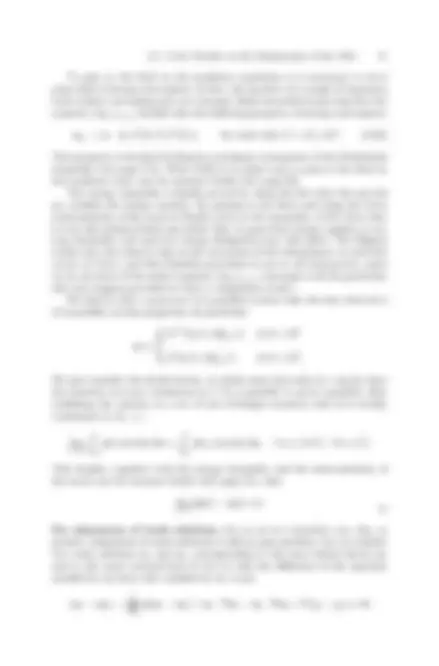



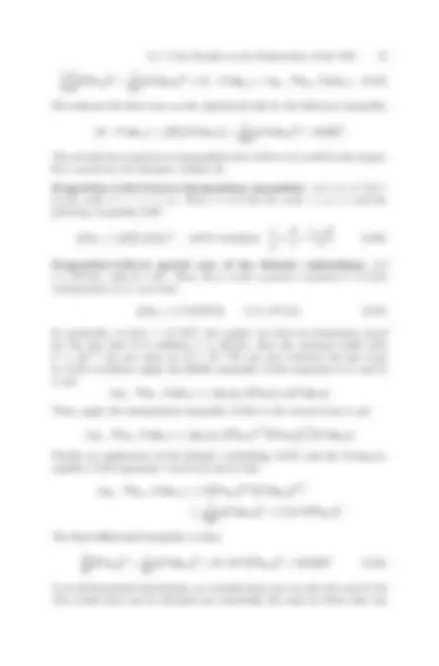
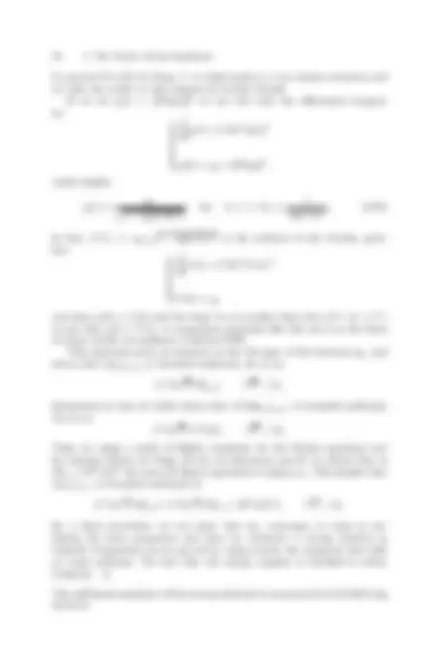

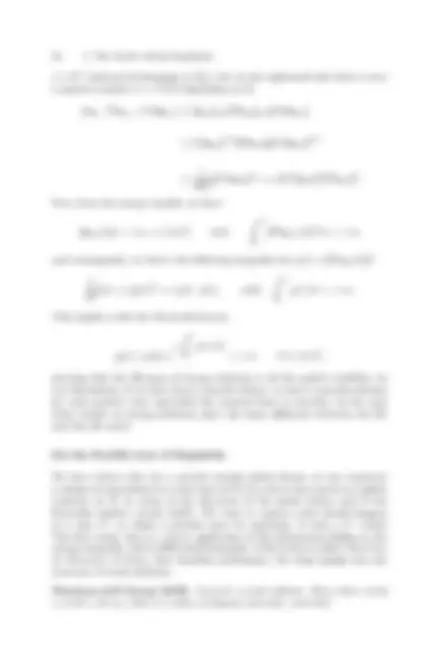

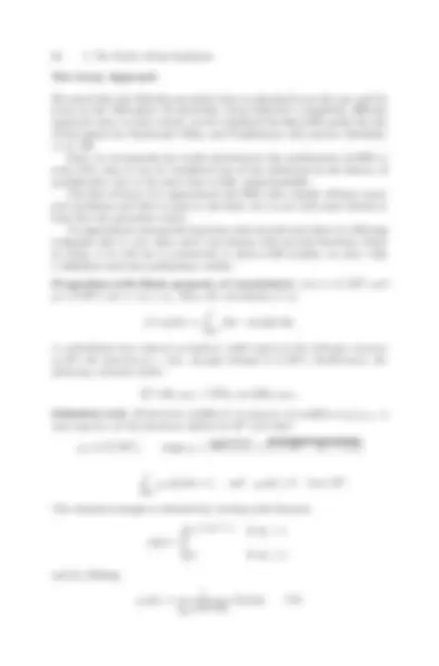
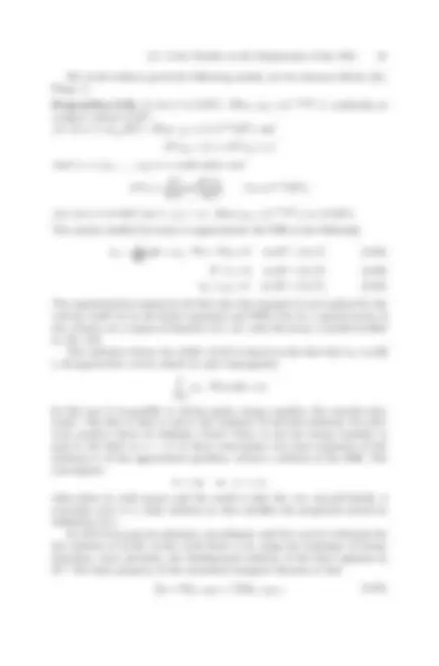
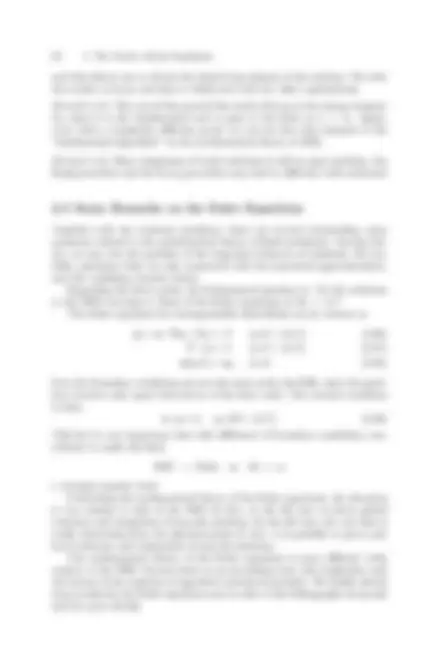
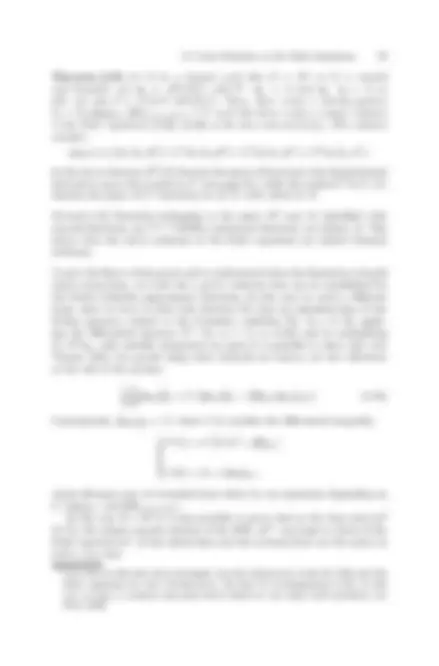
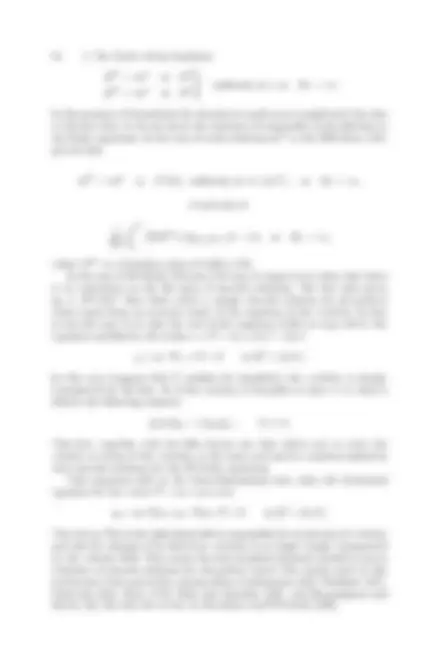

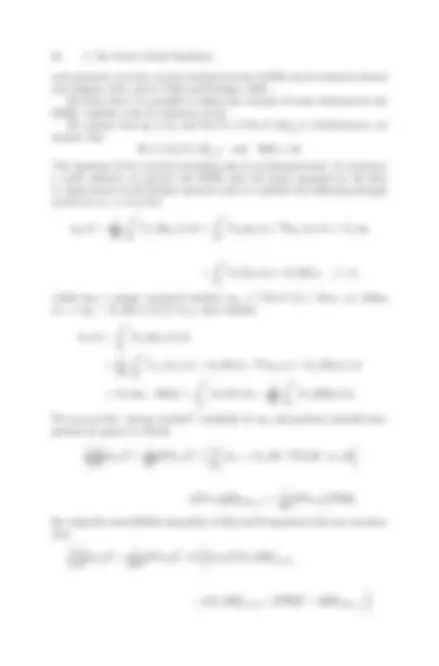
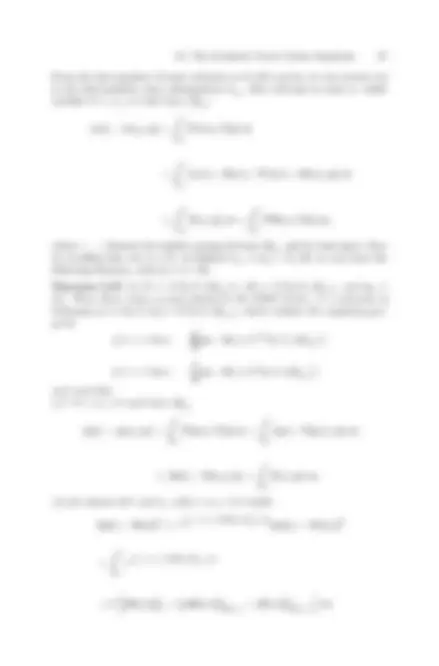
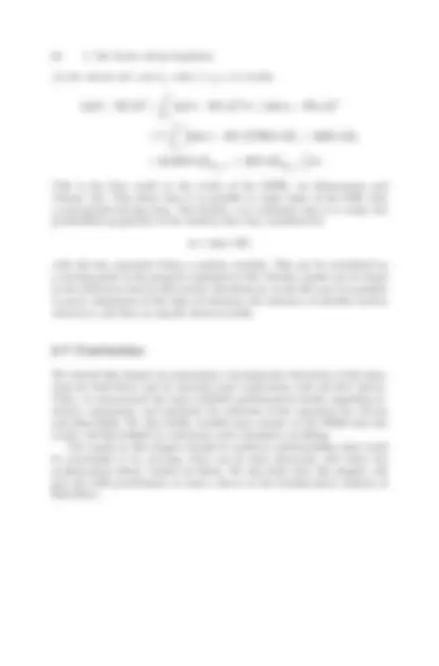


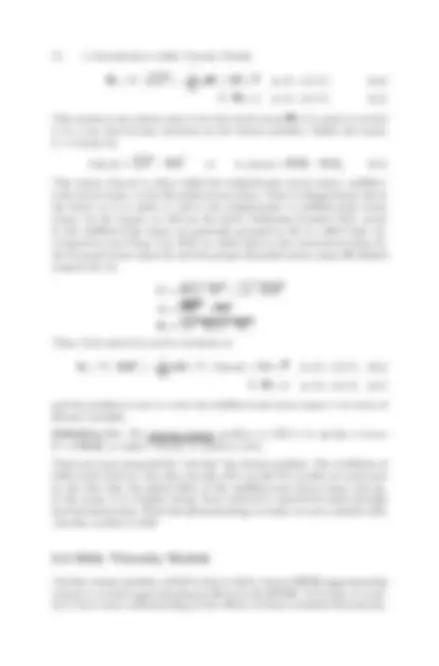
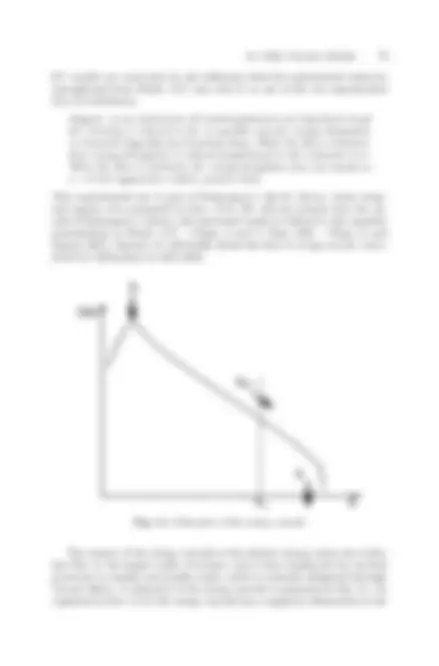
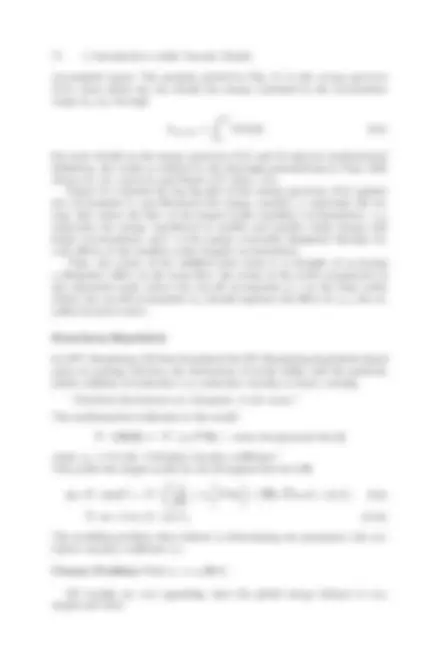
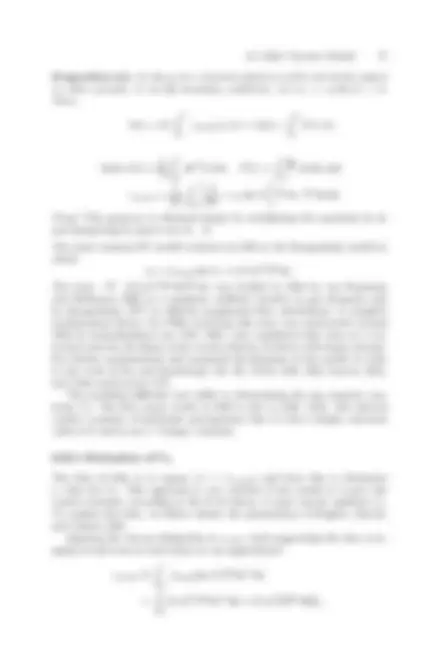
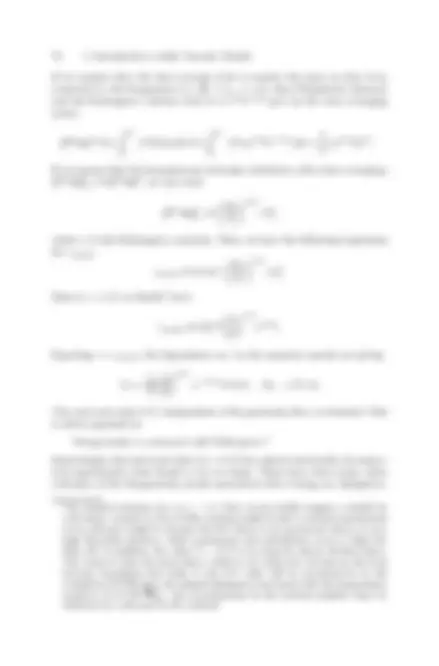
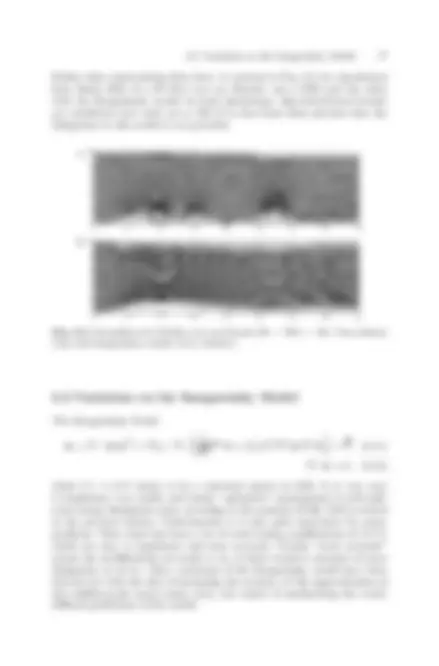

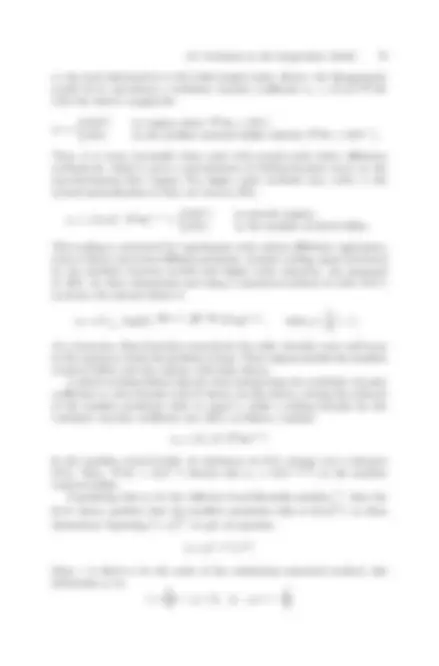

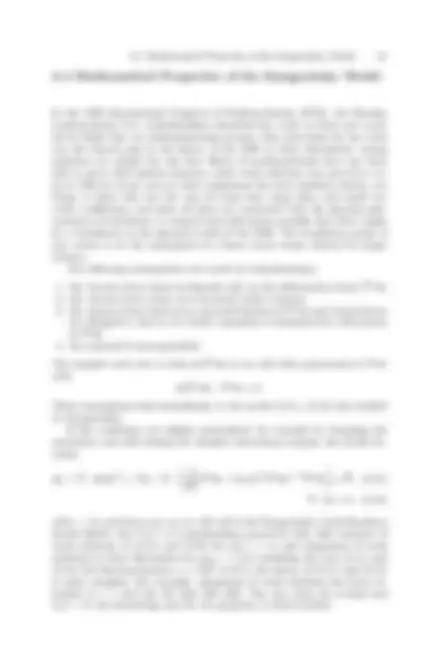
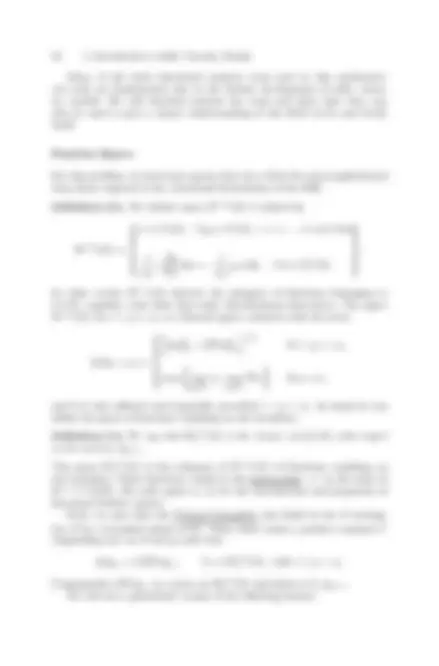
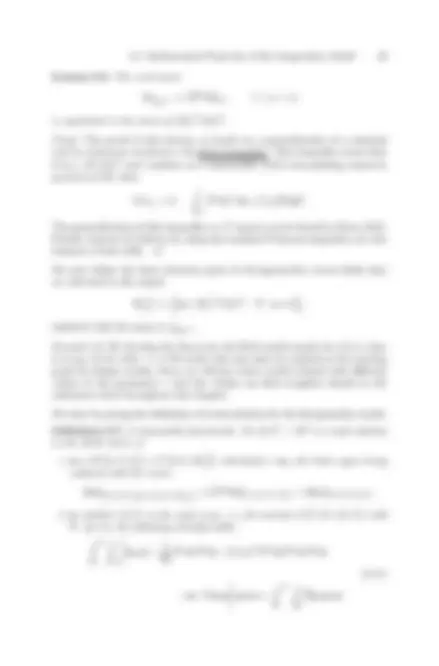
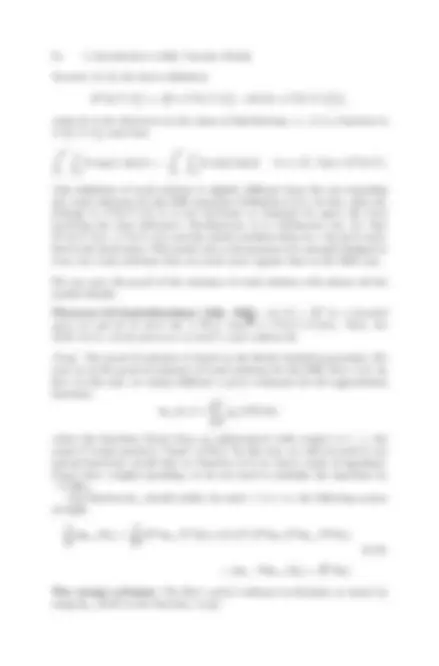
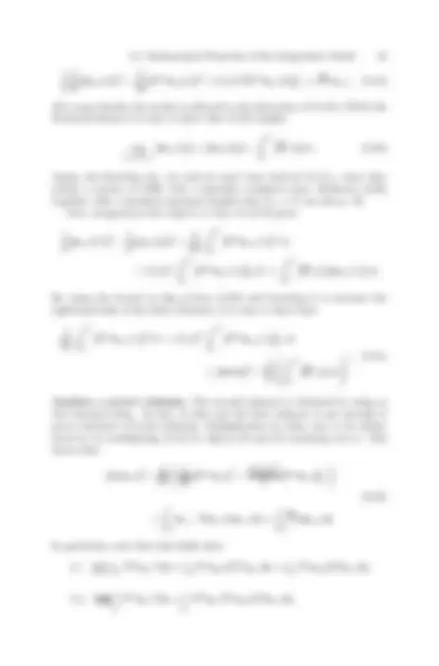
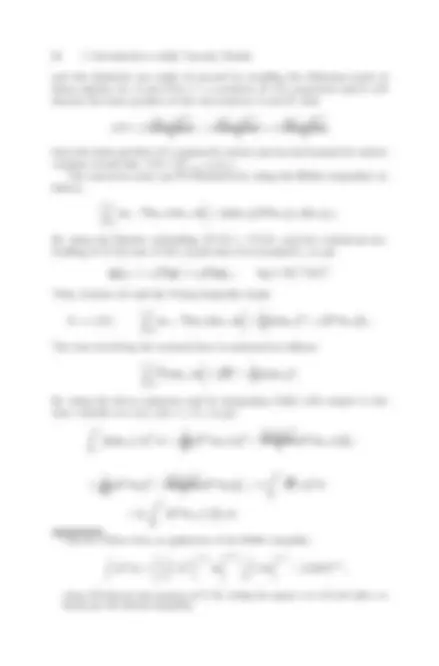
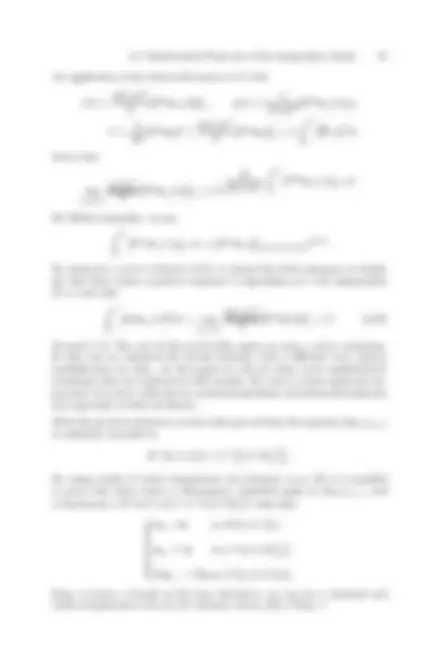
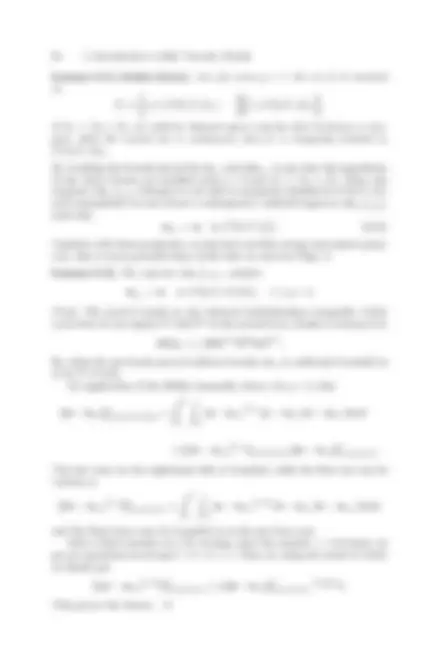


Study with the several resources on Docsity

Earn points by helping other students or get them with a premium plan


Prepare for your exams
Study with the several resources on Docsity

Earn points to download
Earn points by helping other students or get them with a premium plan
Community
Ask the community for help and clear up your study doubts
Discover the best universities in your country according to Docsity users
Free resources
Download our free guides on studying techniques, anxiety management strategies, and thesis advice from Docsity tutors
An overview of mixed models used in large-scale turbulence studies, focusing on the stability and accuracy of these models. It covers the mathematical development of les models, weak solutions to the navier-stokes equations, and the analysis of mixed models. Intended for les practitioners, applied mathematicians, and phd students in computational mathematics.
What you will learn
Typology: Study notes
1 / 357

This page cannot be seen from the preview
Don't miss anything!





























































































Editorial Board
J.-J. Chattot, Davis, CA, USA P. Colella, Berkeley, CA, USA Weinan E, Princeton, NJ, USA R. Glowinski, Houston, TX, USA M. Holt, Berkeley, CA, USA Y. Hussaini, Tallahassee, FL, USA P. Joly, Le Chesnay, France H. B. Keller, Pasadena, CA, USA D. I. Meiron, Pasadena, CA, USA O. Pironneau, Paris, France A. Quarteroni, Lausanne, Switzerland J. Rappaz, Lausanne, Switzerland R. Rosner, Chicago, IL, USA. J. H. Seinfeld, Pasadena, CA, USA A. Szepessy, Stockholm, Sweden M. F. Wheeler, Austin, TX, USA
Dr. Luigi C. Berselli University of Pisa Department of Applied Mathematics “U. Dini” Via Bonanno 25/b I-56126 Pisa, Italy e-mail: berselli@dma.unipi.it
Dr. Traian Iliescu Virginia Polytechnic Institute and State University Department of Mathematics 456 McBryde Hall Blacksburg, VA 24061, USA e-mail: iliescu@math.vt.edu
Dr. William J. Layton University of Pittsburgh Department of Mathematics Thackeray Hall 301 Pittsburgh, PA 15260, USA e-mail: wjl@pitt.edu
Library of Congress Control Number: 2005930495
ISBN-10 3-540-26316-0 Springer Berlin Heidelberg New York ISBN-13 978-3-540-26316-6 Springer Berlin Heidelberg New York
This work is subject to copyright. All rights are reserved, whether the whole or part of the material is concerned, specifically the rights of translation, reprinting, reuse of illustrations, recitation, broadcasting, reproduction on microfilm or in any other way, and storage in data banks. Duplication of this publication or parts thereof is permitted only under the provisions of the German Copyright Law of September 9, 1965, in its current version, and permission for use must always be obtained from Springer. Violations are liable for prosecution under the German Copyright Law. Springer is a part of Springer Science+Business Media springeronline.com © Springer-Verlag Berlin Heidelberg 2006 Printed in Germany The use of general descriptive names, registered names, trademarks, etc. in this publication does not imply, even in the absence of a specific statement, that such names are exempt from the relevant protective laws and regulations and therefore free for general use.
Typesetting: Data conversion by LE-TEX Jelonek, Schmidt & Vöckler GbR, Leipzig, Germany Cover design: design & production GmbH, Heidelberg Printed on acid-free paper 55/3141/YL 5 4 3 2 1 0
VIII Preface
i.e. the mathematical development of the LES models themselves. The second and third questions concerning numerical analysis and computational simu- lation of LES models are essential. However, the numerical analysis of LES should not begin by assuming a model is a correct mathematical realization of the intended physical phenomenon (in other words, that the model is well posed). To do so would be to build on a foundation of optimism. Numerical analysis of LES models with sound mathematical foundations is an exciting challenge for the next stage of the LES adventure. One important approach to unlocking the mysteries of turbulence is by computational studies of key, building block turbulent flows (as proposed by von Neumann). The great success of LES in economical and accurate descrip- tions of many building block turbulent flows has sparked its explosive growth. Its development into a predictive tool, useful for control and design in com- plex geometries, is clearly the next step, and possibly within reach in the near future. This development will require much more experience with practical LES methods. It will also require fundamental mathematical contributions to understanding “How”, “Why”, and “When” an approach to LES can work and “What” is the expected accuracy of the combination of filter, model, discretization and solver. The extension of LES from application to fully developed turbulence to include transition and wall effects and then to the delicate problems of control and design is clearly the next step in the development of large eddy simulation. Progress is already being made by careful experimentation. Even as “[The universe] is written in mathematical language” (Galileo), the Navier–Stokes equations are the language of fluid dynamics. Enhancing the universality of LES requires making a direct connection between LES models and the (often mathematically formidable) Navier–Stokes equations. One theme of this book is the connection between LES models and the Navier–Stokes equations rather than the phenomenology of turbulence. Mathematical development will com- plement numerical experimentation and make LES more general, universal, robust and predictive. We have written this book in the hope it will be useful for LES practition- ers interested in understanding how mathematical development of LES models can illuminate models and increase their usefulness, for applied mathemati- cians interested in the area and especially for PhD students in computational mathematics trying to make their first contribution. One of the themes we emphasize is that mathematical understanding, physical insight and compu- tational experience are the three foundations of LES! Throughout, we try to present the first steps of a theory as simply as possible, consistent with cor- rectness and relevance, and no simpler. We have tried, in this balancing act, to find the right level of detail, accuracy and mathematical rigor. This book collects some of the fundamental ideas and results scattered throughout the LES literature and embeds them in a homogeneous and rigor- ous mathematical framework. We also try to isolate and focus on the math- ematical principles shared by apparently distinct methodologies in LES and
Preface IX
show their essential role in robust and universal modeling. In part I we re- view basic facets of on the Navier–Stokes equations; in parts II and III we highlight some promising models for LES, giving details of the mathematical foundation, derivation and analysis. In part IV we present some of the diffi- cult challenges introduced by solid boundaries; part V presents a syllabus for numerical validation and testing in LES. We are all too aware of the tremendous breadth, depth and scope of the area of LES and of the great limitations of our own experience and under- standing. Some of these gaps are filled in other excellent books on LES. In particular, we have learned a lot ourselves from the books of Geurts [131], John [175], Pope [258], and Sagaut [267]. We have tried to complement the treatment of LES in these excellent books by developing mathematical tools, methods, and results for LES. Thus, many of the same topics are often treated herein but with the magnifying glass of mathematical analysis. This treatment yields new perspectives, ideas, language and illuminates many open research problems. We offer this book in the hope that it will be useful to those who will help develop the field of LES and fill in many of the gaps we have left behind herein. It is a pleasure to acknowledge the help of many people in writing this book. We thank Pierre Sagaut for giving us the initial impulse in the project and for many detailed and helpful comments along the way. We owe our friend and colleague Paolo Galdi a lot as well for many exciting and illuminating conversations on fluid flow phenomena. Our first meeting came through one such interaction with Paolo. We also thank Volker John, who throughout our LES adventure has been part of our day to day “battles”. Our understanding of LES has advanced through working with friends and collaborators Mihai Anitescu, Jeff Borggaard, Adrian Dunca, Songul Kaya, Roger Lewandowski, and Niyazi Sahin. The preparation of this manuscript has benefited from the financial sup- port of the National Science Foundation, the Air Force office of Scientific Research, and Ministero dell’Istruzione, dell’Universit`a e della Ricerca.
Pisa, Italy Luigi C. Berselli Blacksburg, USA Traian Iliescu Pittsburgh, USA William J. Layton April, 2005
Contents
XIV Contents
5 Uncertainties in Eddy Viscosity Models
1
Introduction
Large Eddy Simulation, LES, is about approximating local, spatial averages of turbulent flows. Thus, LES seeks to predict the dynamics (the motion) of the organized structures in the flow (the eddies) which are larger than some user-chosen length scale δ. Properly, LES was born in 1970 with a re- markable paper by Deardorff [87] in which the question of closure, boundary conditions and accuracy of approximation are studied via computational ex- periments. Since then, LES has undergone explosive development as a com- putational technology. Such a rapid development has, naturally, raised many questions in LES, some of which are essentially mathematical in nature. Many of these mathematical issues in LES are important for advancing practi- cal computations. Many are also important for broadening the usefulness of LES from a research methodology to a design tool and increasing its univer- sality beyond fully developed turbulence to the heterogeneous mix of lami- nar, transitional, and fully developed turbulence typically found in practical flows. The great challenge of simulating turbulence is that equations describ- ing averages of flow quantities cannot be obtained directly from the physics of fluids. On the other hand, the equations for the pointwise flow quan- tities are well known, but intractable to solution and sensitive to small perturbations and uncertainties in problem data. These pointwise equa- tions for velocity and pressure in an incompressible, viscous, Newtonian fluid are the Navier–Stokes equations (abbreviated NSE) for the velocity u(x, t) = uj (x 1 , x 2 , x 3 , t), (j = 1, 2 , 3) and pressure p(x, t) = p(x 1 , x 2 , x 3 , t) given by
ut + u · ∇u − ν∆u + ∇p = f , in Ω × (0, T ), (1.1) ∇ · u = 0, in Ω × (0, T ), (1.2)
where ν = μ/ρ is the kinematic viscosity, f is the body force, and Ω ⊂ �d (d = 2 or 3) is the bounded flow domain with a sufficiently regular boundary ∂Ω. The NSE are supplemented by the initial condition and the usual pressure
4 1 Introduction
normalization condition
u(x, 0) = u 0 (x), for x ∈ Ω and
Ω
p(x, t) dx = 0, (1.3)
and appropriate boundary conditions, such as the no-slip condition,
u = 0 on ∂Ω.
When it is useful to uncouple the difficulties arising from the equations of mo- tion from those connected with interaction of the fluid with the boundary, it is usual to study (1.1), (1.2), and (1.3) on Ω = (0, 2 π)d, under periodic bound- ary conditions (instead of the no-slip condition) with zero mean imposed upon the velocity and all data^1 ⎧ ⎪⎪ ⎪⎪ ⎪⎨
⎪⎪ ⎪⎪ ⎪⎩
u(x + 2πej , t) = u(x, t), and
Ω
u(x, t) dx = 0 ,
where
Ω
u 0 (x) dx = 0 , and
Ω
f (x, t) dx = 0 , for 0 ≤ t ≤ T.
We observe that, due to the divergence-free constraint, the nonlinear term u · ∇u can be written in two equivalent ways:
u · ∇u =
j=
uj ∂ui ∂xj
or ∇ · (u u) =
j=
∂xj
(uiuj ).
The NSE follow directly from conservation of mass, conservation of lin- ear momentum and a linear stress–strain relation, see Sect. 2.2 for fur- ther details. One fundamental property of the Navier–Stokes equations that is a direct connection between the physics of fluid motion and its math- ematical description is the energy inequality, proved by J. Leray in his 1934 paper [213]. Here ‖ · ‖ denotes the usual L^2 (Ω)-norm of a vector field ‖u‖ = (
Ω |u(x)|
(^2) dx) 12 and ( · , · ) the associated L (^2) (Ω) inner prod-
uct.
Theorem 1.1. For each divergence-free initial datum u 0 (under either peri- odic or no-slip boundary conditions) there exist weak^2 solutions in the sense of Leray and Hopf. All of them satisfy, for t > 0 , the following energy inequality
1 2 ‖u(t)‖^2 +
∫ (^) t
0
ν‖∇u(τ )‖^2 dτ ≤
‖u 0 ‖^2 +
∫ (^) t
0
(f (τ ), u(τ )) dτ.
If u is a strong solution then the energy inequality holds with inequality re- placed by equality.
(^1) Here ej j = 1,... , d are the canonical basis functions in �d. (^2) We will present later the exact definitions of strong and weak solutions referred to in this theorem.
6 1 Introduction
O(Re−^3 /^4 ), where Re > 0 is the Reynolds number, see (1.4). Thus, in order to capture them on a mesh, we need a mesh size h ≈ Re−^3 /^4 , and conse- quently (in 3D) N = Re^9 /^4 mesh points. To give the flavor of the overall computational cost, here are some representative Reynolds numbers
Even though DNS is obviously unsuitable for many numerical simulations of turbulent flows, it can be useful to validate turbulence models. Moreover, even if DNS were feasible for turbulent flows, a major hurdle would be defining precise initial and boundary conditions. At high Reynolds numbers the flow is unstable. Thus, even small boundary perturbations may excite the already existing small scales. This results in unphysical noise being introduced in the system, and in the random character of the flow. Indeed, as observed in Aldama [7], the uncontrollable nature of the boundary conditions (in terms of wall roughness, wall vibration, differential heating or cooling, etc.) forces the analyst to characterize them as “random forcings” which, consequently, produce random responses. In such settings, calculating average values of flow quantities makes more sense than point values. See Sect. 2.6 for further details. Further, that information, if extractable comprises a data set so large that sifting through it to calculate the quantities needed for flow simulation is a computational challenge by itself. Often these quantities are flow statis- tics or averages. Thus, the clear practical solution to both aspects which has evolved is to try to calculate directly the sought averages. Further, there is considerable evidence, which comes from analyzing data from observations of turbulent flows in nature, that the large scales in turbulence are not chaotic but deterministic, while the sensitivity, randomness, and chaotic dynamics is restricted to the small scales. Thus, it is usual to seek not to predict the point- wise (molecular) couple velocity–pressure (u, p), but rather suitable averages of it, (u, p).
In 1949, John von Neumann wrote in one of his reports, privately circulated for many years (see [117]):
1.1 Characteristics of Turbulence 7
These considerations justify the view that a considerable mathematical ef- fort toward a detailed understanding of the mechanism of turbulence is called for. The entire experience with the subject indicates that the purely analytical approach is beset with difficulties, which at this moment are still prohibitive. The reason for this is probably as was indicated above: That our intuitive relationship to the subject is still too loose – not having suc- ceeded at anything like deep mathematical penetration in any part of the subject, we are still quite disoriented as to the relevant factors, and as to the proper analytical machinery to be used. Under these conditions there might be some hope to ‘break the dead- lock’ by extensive, well-planned, computational efforts. It must be admit- ted that the problems in question are too vast to be solved by a direct computational attack, that is, by an outright calculation of a representa- tive family of special cases. There are, however, strong indications that one could name certain strategic points in this complex, where relevant information must be obtained by direct calculations. If this is properly done, and then the operation is repeated on the basis of broader infor- mation then becoming available, etc., there is a reasonable chance of ef- fecting real penetrations in this complex of problems and gradually de- veloping a useful, intuitive relationship to it. This should, in the end, make an attack with analytical methods, that is truly more mathemati- cal, possible.
Since we are still far from a mathematically rigorous understanding of turbu- lence, the physical markers of turbulence in experiments are important. However, this path is by no means easy. This is apparent when we try to define turbulence. It is usual to describe turbulence by listing its characteristic features. (For a detailed presentation, the reader is referred to Lesieur [214], Frisch [117], Pope [258], and Hinze [151].)